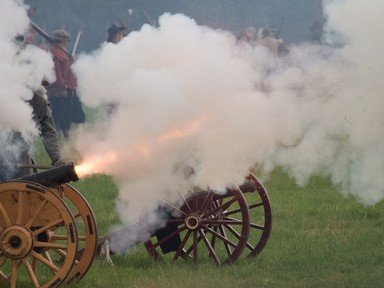
British Battle Miscellany Trivia Quiz
Welcome! In this quiz, you are presented with the names of 15 battles. Pick those 10 that occurred on the territory of the island of Great Britain. Enjoy!
A collection quiz
by DeepHistory.
Estimated time: 3 mins.